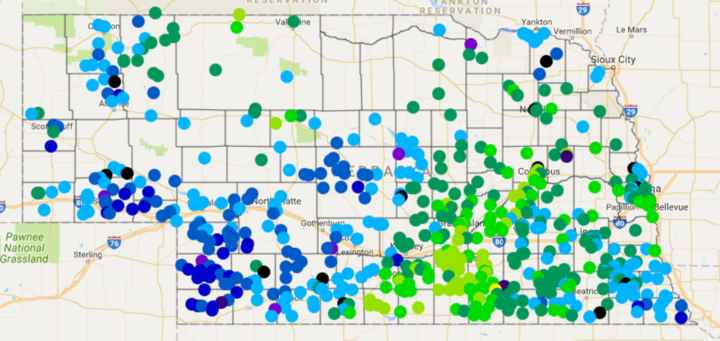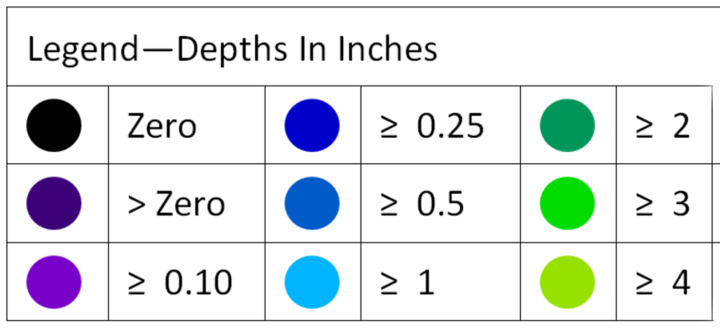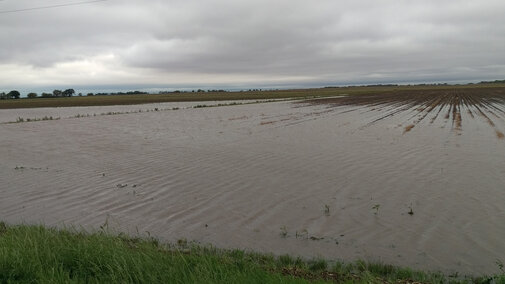Heavy rains of 2 to more than 6 inches in south central Nebraska May 15-19 have led to ponding or flooding in many fields. Survival of young corn plants under these conditions depends on several factors (Table 1).
Smaller seedlings are more susceptible than larger seedlings. The effect of standing water on germinating seeds is not well known. Some hybrids will probably respond better than others, yet differentiating among poor and good hybrids is not possible due to limited data.
A germinating seed is a living organism and as such requires oxygen to survive. In flooded soil conditions, the oxygen supply will become depleted within approximately 48 hours. Cool air temperatures help to increase the possibility of survival. Yet, we would not expect survival of germinating seeds to be greater than that of young plants; they should not be expected to survive more than four days.


| Stage | Condition | Potential for Survival and Problems |
| Before emergence | Germinating | Genetic differences among inbreds (and we assume hybrids) exist for responses to flooding. Seeds will survive for four days. Longer flooding results in lower yields especially at lower nitrogen levels. Crusted soils from heavy rains can reduce emergence. |
| Corn prior to 6th leaf stage | Underwater (6 inches of water on surface); air temperature less than 77°F | Will survive for four days. Longer flooding results in lower yields especially at lower nitrogen levels. Some plants will be buried by sediment and residue and may not survive. |
| Corn prior to 6th leaf stage | Underwater (6 inches of water on surface); air temperature greater than 77°F. | May not survive more than 24 hours. |
| Corn prior to 6th leaf stage | Saturated, cold soils, flooding | Seed rots, seedling blights, various other pathogens, crazy top |
Additional points on heavy rains, flooding, and crusting (from CropWatch, May 23, 2011).
- The longer an area remains ponded, the higher the risk of plant death.
- Completely submerged corn is at higher risk than corn that is partially submerged. Plants that are only partially submerged may continue to photosynthesize, albeit at limited rates.
- Corn will survive longer when temperatures are relatively cool — mid-60s or cooler — than when it's warm — mid-70s or warmer. Cooler temperatures forecast for this week will encourage survival.
- Even if surface water subsides quickly, the likelihood of dense surface crusts forming as the soil dries increases the risk of emergence failure for recently planted crops.
- Extended periods of saturated soils after the surface water subsides will take their toll on the overall vigor of the crop.
- Associated with the direct stress of saturated soils on a corn crop, flooding and ponding can cause significant losses of soil nitrogen due to denitrification and leaching of nitrate N. (See earlier CW article.)
- In addition, diseases and other problems can develop due to silt in the whorls.

